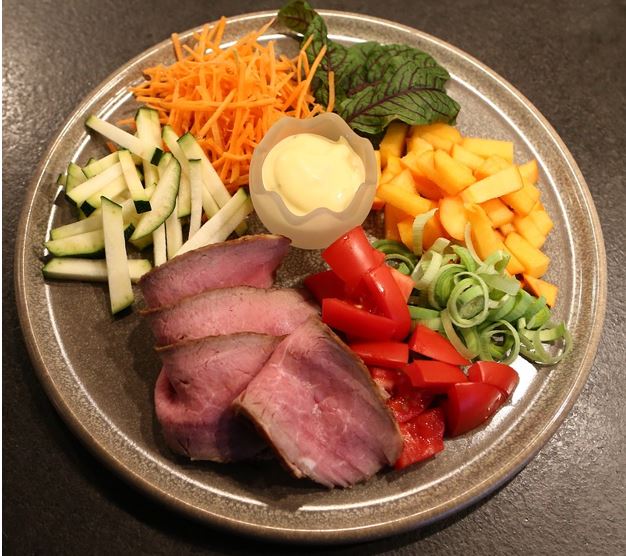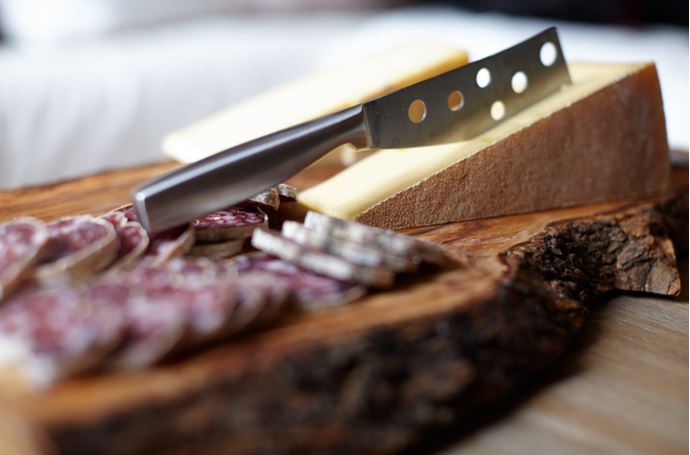
Stock-breeding has always been a central place in the production of sausages and dried meats. The processing of meat products in order to achieve a longer shelf life has been applied for centuries not only in Bulgaria but also worldwide. Each country is proud of its own special appetizing products that make her known across the world. Bulgarians are proud of some of their typical local production delicacies. The most loved of all are the sudjuk, the lukanka, the haggis, and a number of other specific culinary specialties dating back to the grandmother’s table, preserved to this day.
-
Memories
Everyone has seen the characteristic view of the hanging sudjuk and horseshoe sausages, that can hardly be kept away and high until their complete drying. Almost an impossible mission, as the temptation is great. And if the harvest was good and the red wine came out great, the sausages may vanish and the guilty won’t be found. It is hard to resist the appetizers used not only with the main dishes but also as snacks between meals.
-
Tradition and Innovations
Raw dried products have always had high consumption. Increasing production and assortment is an inevitable move in response to increasing consumption. Many companies rely on introducing new technologies and expanding existing ones to meet market requirements. Regardless of the technologies used, at the heart of the production process of Bulgarian dried meats and sausages, today are biochemical changes. The purposeful use of microorganisms guides the course of microbiological processes, resulting in the structure, color, and taste of the finished products.

-
Glorified regions
In the traditional preparation of sudjuk are used most often chopped pork and veal meat. Spices are very important to achieve the characteristic scent and taste. The flavored mixture is filled into natural intestines. When drying, it is important to use places with good air circulation, and periodic gentle stretching and squeezing ensure the horseshoe shape. Compliance with stringent requirements in terms of air temperature and humidity is required.
According to the taste, the composition may be entirely of pork meat. An extremely important condition for achieving this is the area where the animals used for production are bred, as well as their natural features. Thus Gorna Oryahovitsa, Bansko, and Chiprovsko were celebrated as some of the best regions for Sudjuk.
The Gornioryovski Sudjuk is the first Bulgarian proudly protected geographical name in Europe. The tradition of its production is centuries-old. The secret is pure good beef as the main ingredient and a special mix of spices. The exact proportions guarantee the authentic taste of the favorite appetizer.
Red wine is one of its best friends, and for modern gourmet lovers, it is a unique addition to pizzas and various types of pasta.
-
Sudjuk Day
The people of Gorna Oryahovitsa can be proud of the celebration of their culinary symbol. The celebration is accompanied by red wine and the aim is not only the joy but also the preservation of the authentic native recipes. Every year the start of the summer sets the beginning of a three-day gourmet tasting and fun.

-
Fine-tuning storage
The very production’s objective of the famous appetizer is to extend the shelf life of the meat, but there are still a few details that must be fulfilled when storing it to enjoy long enough its top quality and taste.
Sudjouk, lukanka, and other appetizing delicacies of this type can withstand up to four, five months as long as the room they are stored in is with minimal moisture. It should be very clean and the appetizers are placed out of the reach of rodents. You will also need to take precautions against insects. However, it is not a good idea to wrap the delicacies in a paper, as this may cause them to dry and harden.
Another option is just to store them in the refrigerator.
If you prefer you can put them in a tightly-closed container, but only after making sure that there is no access to any moisture. After a certain storage period, you can see that the Lukanka and Sudjouk are covered with a thin and transparent layer of mold. Do not worry about this fact. It is extremely easy to remove it and it does not change in any way the taste characteristics and quality of the products.
When the long-awaited moment of consumption arrives, peel off the wrapper, cut fine skewed slices, pour a glass of red wine, and enjoy a delicious moment in your everyday life. Cheers!

